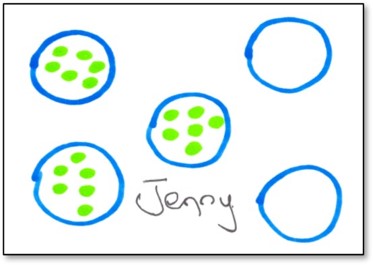To stream or not to stream?
I have never been a fan of streaming or of fixed ability grouping, however flexible grouping can be very beneficial. When I worked as an Adviser for Gifted and Talented Education in Queensland, I used to promote Renzulli’s revolving door metaphor. In short, the revolving door recognizes that a gifted student may not be gifted at everything so will be included in some special events and activities but not just because of the label. The student themself can also opt in or out, in all such events. Students have what I call jagged profiles. They have strengths and weaknesses, they have had different experiences and move through developmental stages at different rates. Fixed grouping does not take these factors into account, once in the top group or the ‘bottom’ group that is generally where students stay. The placement in groups becomes a self-fulfilling prophesy. Students perceive themselves according to their label which is often a false description and live up or down to the expectations. The song ‘My word you do look queer’ is an amusing take on this theme.
The term self-fulfilling prophesy was coined by Robert K. Merton in 1948 and referred to “when false beliefs create their own realities”. Another term for this was the “Pygmalion Effect”.
Labelling students
Identifying, labelling, and then creating fixed groupings influences the way in which teachers and others plan for and interact with particular students, sometimes intentionally but often unintentionally. The following list of negative impacts of grouping and streaming practices are generalizations cited in educational literature and of course there are many exceptions but never the less it is worth highlighting the inadvertent impact of labelling students as low and then syphoning them off either to a low group or to another educator.
Teachers, having identified a student as low attainers, often think that low attainment is due to low ability (not necessarily true) and then often unintentionally tend to:
- have or set low expectations
- dumb down the curriculum content in the belief that students can’t manage harder stuff
- accept poorer quality work or thinking
- assist or rescue before students have had time or opportunity to try, thus robbing the student of the success that comes from doing something by the self
- give praise and rewards rather than constructive feedback
This may lead to students:
- loosing motivation, interest and perseverance,
- experiencing feelings of failure, helplessness or maths anxiety,
- being unable to learn and remember what has been shown or explained due to poor self-image or stress,
- believing that they are no good at maths or do not have a maths brain.
Interestingly at the other end of the spectrum those labelled as top students may be under pressure to always achieve and may be pushed forward before they have deeply understood and applied what they have been taught.
So … Flexible Grouping
Flexible grouping refers to the practice of selecting how to group students for a particular task or area of content and is usually based on formative assessment, knowledge of the students and learning intent. Flexible grouping is short term not fixed for the long term. There are times when mixed ability grouping is really important, for instance during problem solving when we need all students to see, learn from and respect the strategies of others. This is good for all students, those (thought of as ‘top mathematicians) who always choose a traditional over learned method for instance need to see and understand that other methods are equally valid and may even be more efficient. A student struggling to get started can take inspiration or suggestions from a peer. We know that our struggling students need to see the strategies of others or they will never experience them. From the work of the social constructivist, Vygotski, we take the understanding that:
“What a child can do with the help of a friend today, they can do by themselves tomorrow”.
When reflecting on a whole class problem solving lesson based on student work samples we need the class to identify the powerful mathematical thinking used, even in an unfinished, not very sophisticated sample which will have mathematical power behind it if we look for it.
The following unfinished ‘pretend’ work sample showing how to work out ‘how many blueberries will be needed for 5 muffins if there are 6 on each muffin’ can be used as a tool for learning and building success.

Reflection Questions
What is mathematically powerful about the way Jenny set out her page to get started? (Five muffins ready to make 5 groups of 6.)
What do you notice that is mathematically powerful about the way the blueberries have been set out each time?
(You can subitize parts and count on. It shows lots of ways of making 6.)
What do you think Jenny will do next to finish her solution?
What different ways could we work out how many blueberries so far?
When this is finished how will it match the number sentences and other methods that have been used?
Hopefully this reflection shows how and why all students can be engaged in the same problem in mixed ability groupings, not streamed groupings. Note the students differentiate for themselves and, with constructive feedback, can move forward without being told what to do and how to do it. They can see their own thinking on their page and have it shared with others.
So there will be times when you want to specifically group certain students for a ten-minute focused-learning episode. This will be needs based and specific. You will have noticed that certain students had a misconception, gap or poor grasp of something and you will call them together. It may not always be the same students though because as we know students have jagged profiles. There will also be times when you see some students need a particular scaffold or stretch so they will come together for a focused-learning episode. Careful monitoring is needed to ensure that all students are receiving attention, no one, often the middle of the range compliant students are not going unnoticed or unstretched.
